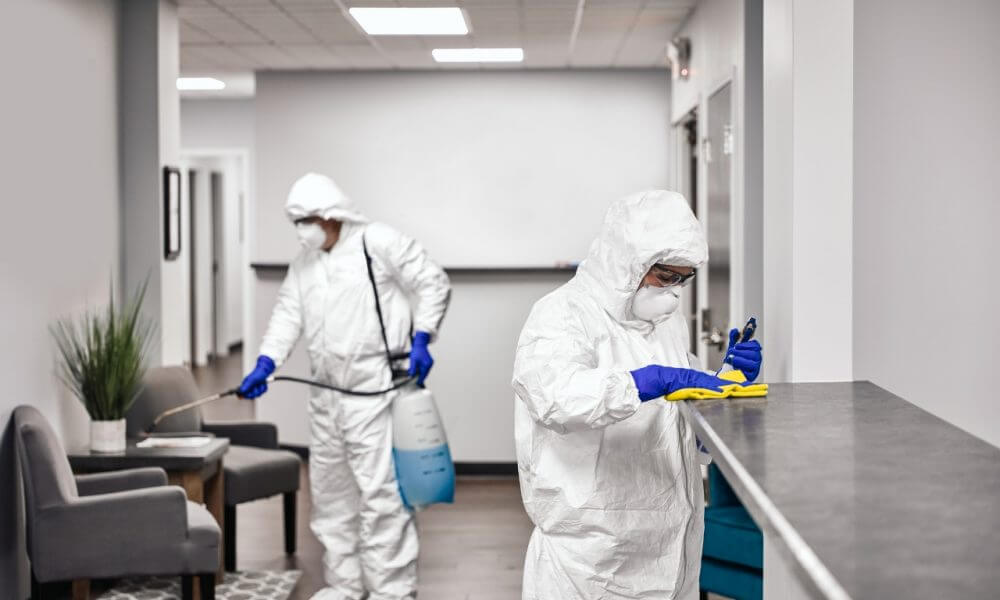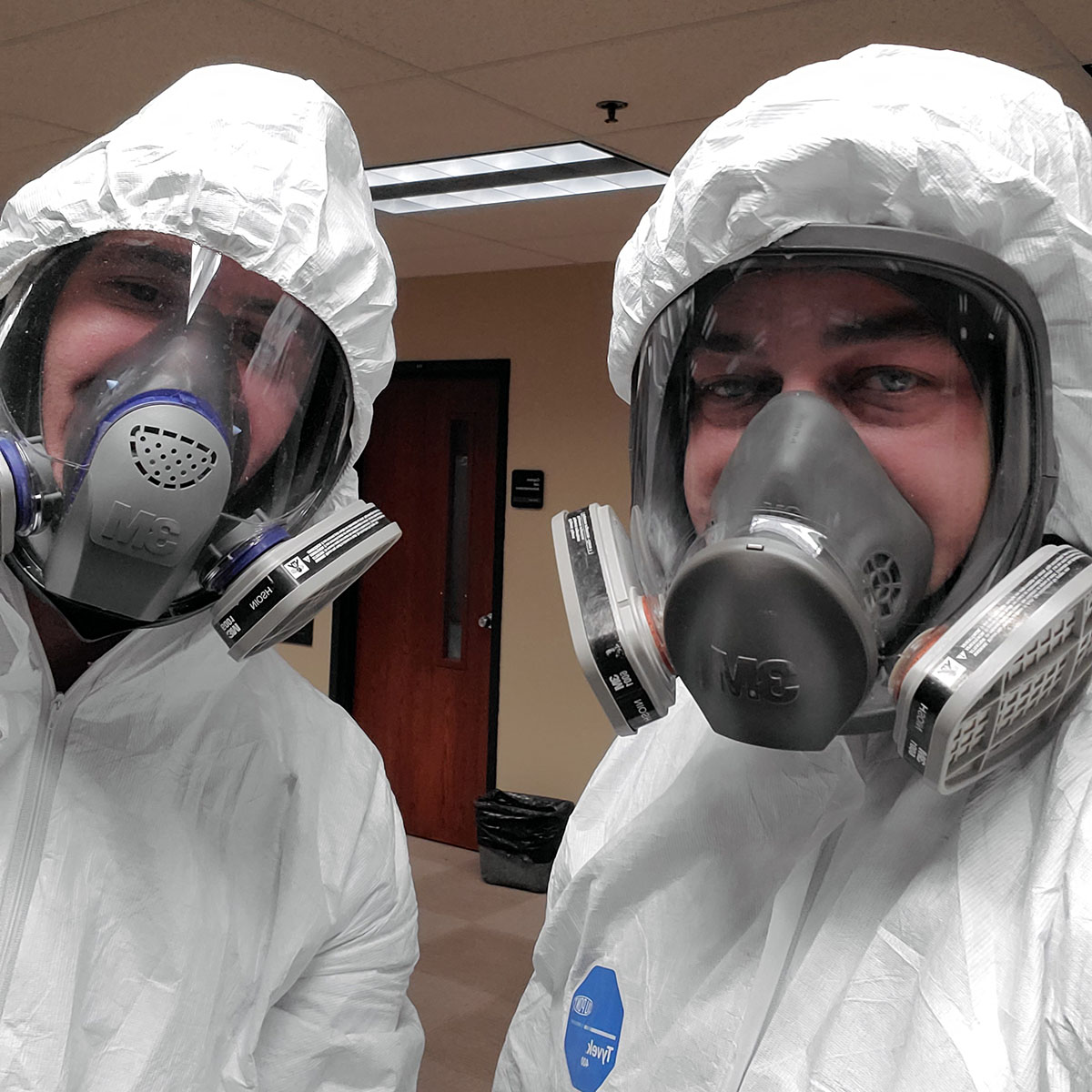Mold Remediation Services: Safeguarding Your Property from Mold And Mildew Damage
Mold Remediation Services: Safeguarding Your Property from Mold And Mildew Damage
Blog Article
Professional Biohazard Cleansing and Decontamination for Blood, Bodily Fluids, and Hazardous Materials
The prospective health and wellness dangers connected with exposure to biohazards emphasize the important demand for meticulous handling and extensive clean-up. As we navigate the detailed landscape of biohazard cleanup, recognizing the nuances of laws, conformity, and the customized equipment at play comes to be necessary in making certain a risk-free and extensive decontamination procedure.
Health Dangers of Biohazard Exposure
Direct exposure to biohazards postures significant health and wellness threats that can cause severe effects for areas and people alike. Biohazards incorporate a wide variety of organic substances, including blood, physical liquids, mold and mildew, bacteria, infections, and various other possibly transmittable materials. When people enter contact with these biohazards, whether through accidents, inappropriate handling, or environmental exposure, they face the danger of having severe health problems or diseases.
Among the primary health and wellness risks connected with biohazard direct exposure is the transmission of infectious diseases. Bloodborne microorganisms such as HIV, liver disease B and C, and various germs can be existing in biohazardous products, posturing a straight risk to human health and wellness. Inhaling airborne biohazards like mold and mildew spores or coming into contact with infected surface areas can also result in respiratory system problems, allergies, and other adverse wellness effects.
Furthermore, biohazard exposure can have long-term health ramifications, with some conditions showing up years after the initial get in touch with (Blood Cleanup). Consequently, it is critical to prioritize appropriate biohazard cleansing and purification to mitigate these health threats and guarantee the security of people and communities

Specialized Educating for Biohazard Cleanup
When it concerns managing biohazard cleanup effectively and securely, specialized training plays an essential function in making sure correct decontamination treatments are followed. Biohazard cleanup requires specific understanding and skills to properly alleviate risks related to bloodborne pathogens, physical fluids, and unsafe products. Experts learnt biohazard clean-up undergo rigorous direction on exactly how to safely take care of, get rid of, and deal with biohazardous products to stop contamination and direct exposure.
Specialized training for biohazard cleanup covers a series of necessary subjects, consisting of proper personal safety devices (PPE) usage, bloodborne microorganism recognition, purification strategies, and hazardous waste disposal procedures. Individuals trained in biohazard cleaning are furnished with the essential know-how to analyze contamination levels, identify possible hazards, and apply suitable clean-up procedures in compliance with governing requirements.
Constant training and education are vital in the area of biohazard cleanup to stay upgraded on the current purification technologies, safety protocols, and policies. By purchasing specialized training, biohazard cleanup professionals can properly reply to emergency situation clean-up situations and protect both public health and the setting.
Relevance of Correct Purification Techniques
Using correct purification techniques is essential in biohazard clean-up to successfully eliminate hazardous materials and reduce health risks. Effective purification not only makes certain the removal of noticeable traces of blood, physical fluids, and other biohazards but additionally targets unnoticeable microorganisms that may pose significant health and wellness hazards if not properly eradicated. By following rigid purification methods, trained professionals can significantly minimize the risk of direct exposure to unsafe bacteria, viruses, and bacteria that could result in infections or conditions.
Appropriate purification methods entail making use of specialized tools and disinfectants that are specifically created to reduce the effects of biohazards effectively. Detailed cleansing and disinfection of polluted areas are important to avoid the spread of virus and ensure a safe setting for residents. Additionally, the appropriate disposal of biohazardous waste adhering to purification procedures is vital in stopping contamination of other surfaces or people.

Tools and Tools for Safe Clean-up
When dealing with blood, bodily my latest blog post fluids, or harmful materials, biohazard cleansing specialists depend on specialized equipment to minimize exposure dangers see post and completely decontaminate the afflicted area. Furthermore, biohazard cleansing packages consisting of anti-bacterials, absorbent products, and biohazard bags are used to safely get rid of and include of polluted items.
Advanced cleansing devices like hospital-grade disinfectants, HEPA-filtered vacuum cleaners, and fogging machines are utilized to sterilize surface areas and get rid of biohazards effectively. Specialized equipment such as sharps containers and biohazard waste disposal bins are utilized to safely manage sharp objects and biohazardous waste materials. By utilizing the right tools and tools, biohazard cleaning experts can make certain a comprehensive clean-up procedure that focuses on security and decreases health threats for both workers and residents of the affected area.
Regulations and Compliance in Biohazard Cleansing
Correct adherence to regulations and compliance criteria is critical in biohazard cleansing to make sure the safety and security of both workers and the atmosphere. Government companies such as OSHA (Occupational Safety and Health Management) and the EPA (Epa) have actually established certain guidelines for biohazard cleanup procedures to minimize health risks and ecological contamination. These policies cover a variety of aspects consisting of the handling, transportation, and disposal of biohazardous products, along with the required training and safety equipment required for workers associated with the clean-up procedure.
Biohazard cleansing companies have to stay up-to-date with these regulations to guarantee that their procedures satisfy the required safety and security standards. Failing to adhere to these regulations can result in severe consequences, including fines, lawful action, and jeopardizing the wellness of people and the environment. By adhering to stringent laws and conformity actions, biohazard cleansing firms can successfully reduce threats and ensure a risk-free and complete cleanup procedure for all events involved.
Final Thought
To conclude, biohazard cleansing and purification need customized training, proper strategies, and adherence additional info to laws. Direct exposure to blood, physical liquids, and harmful products postures significant wellness threats, making it essential to utilize the ideal tools and tools for safe cleanup. By complying with rigorous methods and standards, experts can successfully alleviate the risks connected with biohazard direct exposure and ensure the security of both themselves and others.
As we navigate the detailed landscape of biohazard cleaning, understanding the subtleties of guidelines, compliance, and the customized tools at play comes to be critical in making sure a risk-free and detailed decontamination procedure. (Blood Cleanup)
When it comes to handling biohazard cleanup effectively and safely, specialized training plays an essential duty in making certain appropriate decontamination treatments are complied with.Utilizing proper purification strategies is crucial in biohazard clean-up to efficiently decrease and remove unsafe materials wellness threats. In addition, biohazard cleaning sets consisting of disinfectants, absorbent materials, and biohazard bags are made use of to safely consist of and get rid of of infected items.
Government agencies such as OSHA (Occupational Safety And Security and Health And Wellness Administration) and the EPA (Environmental Defense Company) have developed particular guidelines for biohazard cleaning procedures to reduce health and wellness threats and ecological contamination.
Report this page